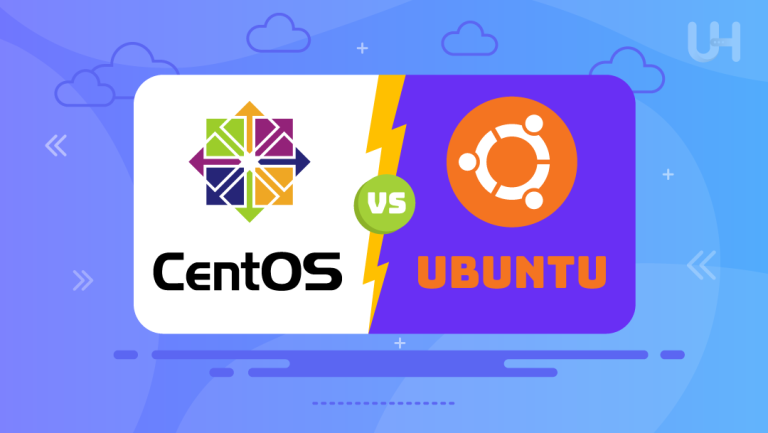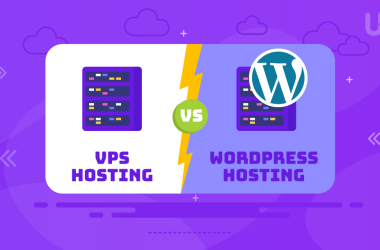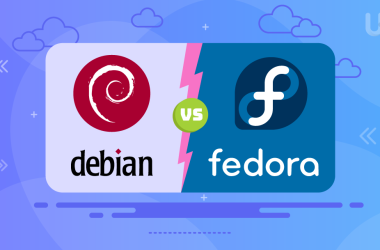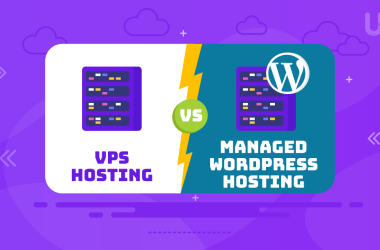In many people’s minds, AlmaLinux vs Rocky Linux is the fundamental issue when looking for an alternative to CentOS. Coming from the desire to have a stable, long-term support system as a fallout of Red Hat shifting CentOS to CentOS Stream, both distributions have some stiff competition for enterprise users.
CloudLinux-supported Alma Linux and Rocky Linux are projected by Gregory Kurtzer, the cofounder of CentOS, to offer seamless drop-in replacements for CentOS. Understanding each distribution’s origin, governance, target audience, and performance will allow you to decide which suits your needs. In this blog, we explore the vital differences and similarities between AlmaLinux vs Rocky Linux to help you make a better decision.
Rocky Linux vs AlmaLinux: Origins and Development History
AlmaLinux
AlmaLinux was developed by CloudLinux, a company well-known for its work in enhancing Linux server security and stability. Although it was announced in December 2020 and officially released in March 2021, AlmaLinux is designed to be a free, open-source, community-driven project that works as a one-for-one binary compatible with Red Hat Enterprise Linux, or RHEL.
To ensure that AlmaLinux stays that way, the AlmaLinux OS Foundation was created to oversee the project. Its very name, from the Latin for “soul,” is a reflection of its purpose: to be the heart of the community.
Rocky Linux
Rocky Linux is an effort started by Gregory Kurtzer, the co-founder of CentOS, immediately after Red Hat announced that it would be focusing exclusively on CentOS Stream. Announced in December 2020, Rocky Linux aims to fill the gap left by the old CentOS by providing a stable and consistent platform built from RHEL sources. Rocky Linux made its first stable release in June 2021.
The project is governed by the Rocky Enterprise Software Foundation, under whose protection the distribution lays to rest—keeping it available and free from corporate meddling, as it was in the legendary predecessor’s time.
Alma Linux vs Rocky Linux: Community and Support

AlmaLinux
AlmaLinux boasts a very diverse and energetic community supporting it, with the AlmaLinux OS Foundation on standby. The Foundation guarantees that the project remains free and open for everyone through different ways of broad involvement. Users can access the multiple channels of support it offers, like the official forums, mailing lists, and dedicated IRC channels.
A community-driven development process guarantees timely problem resolution and regular incremental updates. More so, AlmaLinux has an edge with commercial support options by CloudLinux, which offers professional services and enterprise-grade support for businesses relying on Linux distribution for their mission-critical purposes.
Rocky Linux
The Rocky Enterprise Software Foundation provides support for Rocky Linux, with a major focus on the community-driven model. The users working on this project are very vigorous and active in their participation. In such a scenario, fast-paced development and wide adoption become obvious.
Regarding support, Rocky Linux has community forums, chat channels, and mailing lists where users can get help, hence promising multiple ways for its users to get help. The RESF provides extensive documentation and regular updates to secure its distribution from servers of other distributions, such as the Kali Linux server. At the enterprise level, Rocky Linux collaborates with various partners to showcase professional support for organizations seeking dependable, long-term IT infrastructure solutions.
Update Your Infrastructure With The Linux Hosting!
Want to upgrade your infrastructure? Start now with Linux Hosting from Ultahost. Seamlessly compatible with AlmaLinux and Rocky Linux, it ensures robust performance and reliability for your enterprise needs. Choose Ultahost for a smooth transition and a superior hosting experience.
Rocky vs Alma: Governance and Management
AlmaLinux
AlmaLinux is governed by the AlmaLinux OS Foundation, a non-profit entity set up to oversee the distribution and community engagement development. The foundation is composed of many stakeholders in terms of developers, contributors, and industry experts, thereby representing different groups.
Its mission is to preserve the project as free and open source while driving collaboration and transparency. Regular board meetings and community consultations occur to ensure that the AlmaLinux course is aligned in its use base for the best interests of everyone. This established form of governance gives the project a clear vision and steady progression.
Rocky Linux
The Rocky Enterprise Software Foundation, a community-driven entity with governance that allows contributors to further increase their influence based on merit, has constituted Rocky Linux to protect the CentroS legacy with integrity and continuity. This open approach encourages active participation; officials are certain that decisions will include collective inputs from across the community.
The management approach toward RESF includes regular updates, communication transparency, and also discussion openness. Moreover, on the side of Rocky Linux, emphasis will be laid on community feedback and collaboration.
Alma vs Rocky Linux: Target Audience and Use Cases
AlmaLinux
AlmaLinux is developed for business persons, developers, and also IT professionals who are looking for a stable, enterprise-friendly operating system. Being one-to-one binary compatible with Red Hat Enterprise Linux makes Almalinux best for organizations seeking reliable production environments without associated costs. Common uses include cloud-based web hosting, database management, and software development.
What has made AlmaLinux very popular among enterprises for long-term support and predictable performance is its strong security features, wide support options, and user-friendly community in place; moreover, extensive documentation is provided to make things easy for those migrating from Fedora or CentOS.
Rocky Linux
Targeting this broad base of enterprises, higher education, and overall individual users who need an open, community-oriented, acceptable, and dependable RHEL alternative, Rocky Linux is preferred by many—especially those who like the stability and predictability of CentOS. The most common use cases for Rocky Linux include Linux cloud deployments, high-performance computing, and also virtualized environments.
Rocky Linux is committed to community engagement and uses effective open governance, making it pliable to the user’s operational needs. Moreover, it is fully compatible with RHEL, which guarantees integration within these pre-existing infrastructures and ensures that it can be a realistic option for organizations.
AlmaLinux vs Rocky Linux: Compatibility and Performance
AlmaLinux
This means that AlmaLinux is developed to maintain the principle of binary compatibility one-to-one with Red Hat Enterprise Linux. This makes it compatible with any software compiled for RHEL or CentOS distributions. Therefore, porting from CentOS or RHEL would be pretty smooth and simple, just requiring minimal configuration changes.
The uniformity in performance across different hardware and cloud platforms makes AlmaLinux quite versatile for multiple deployment scenarios. It keeps updating and patching for data privacy and an optimized system. Lastly, performance benchmarks indicate AlmaLinux to be highly efficient and reliable. Thus it is able to form a solid core for enterprise-level applications and services.
Rocky Linux
Rocky Linux also offers absolute binary compatibility with RHEL and thus has no problem running applications/workloads developed for RHEL. This distribution focuses on stability and performance to provide a robust base for mission-critical operations.
The Rocky Linux development team keeps the system’s robustness and efficiency in place with timely updates and security patches. Performance tests demonstrate Rocky Linux to be brilliant across a number of environments, including bare-metal hypervisors and also virtualized cloud-computing infrastructures.
Conclusion
AlmaLinux vs Rocky Linux both offer unique strengths and community support and are really excellent substitutes for CentOS. Backed by CloudLinux, AlmaLinux offers a robust enterprise-grade solution with strong commercial support. Rocky Linux, headed by Gregory Kurtzer, one of the original founders of CentOS, comes from community-driven development and pertains to continuity. Both distributions provide full compatibility with Red Hat Enterprise Linux (RHEL) and hence find applications in many areas. Be it commercial backing or community governance, AlmaLinux vs Rocky Linux offers robust and also high-performance platforms.
Improve server performance and stability with a Cloud Linux VPS from Ultahost. It is entirely compatible with AlmaLinux and Rocky Linux, providing the perfect solution for seamless migration and enterprise-grade reliability.
FAQ
What are AlmaLinux and Rocky Linux?
AlmaLinux and Rocky Linux are independent, community-driven Linux distributions. They will run at the enterprise level with long-term support, thus working as alternatives to CentOS.
Who are the developers of AlmaLinux and Rocky Linux?
AlmaLinux is developed by the AlmaLinux OS Foundation, which is sponsored by CloudLinux. Rocky Linux is developed by the Rocky Enterprise Software Foundation, headed by Gregory Kurtzer, one of CentOS’s founders.
Are AlmaLinux and Rocky Linux free to use?
Yes, AlmaLinux and Rocky Linux are free to use, with open-source licenses for community-driven development and support.
How does AlmaLinux compare with Rocky Linux for compatibility?
Both distributions are binary-compatible with Red Hat Enterprise Linux, meaning RHEL-based applications and environments work seamlessly, without issues.
How are AlmaLinux and Rocky Linux supported?
AlmaLinux is supported by the community through forums and mailing lists, whereas CloudLinux provides its commercial support. In contrast, Rocky Linux has community support through forums and chat channels but receives enterprise support from its partners.
Which Distro is best suited for an enterprise?
Both distributions have enterprise use cases: AlmaLinux has strong commercial backing, and Rocky Linux emphasizes community-driven governance.
Can I easily switch from CentOS to AlmaLinux or Rocky Linux?
Yes, both distributions aim to be a drop-in replacement for CentOS; hence, migration would be no issue, and only minor changes would be required.











